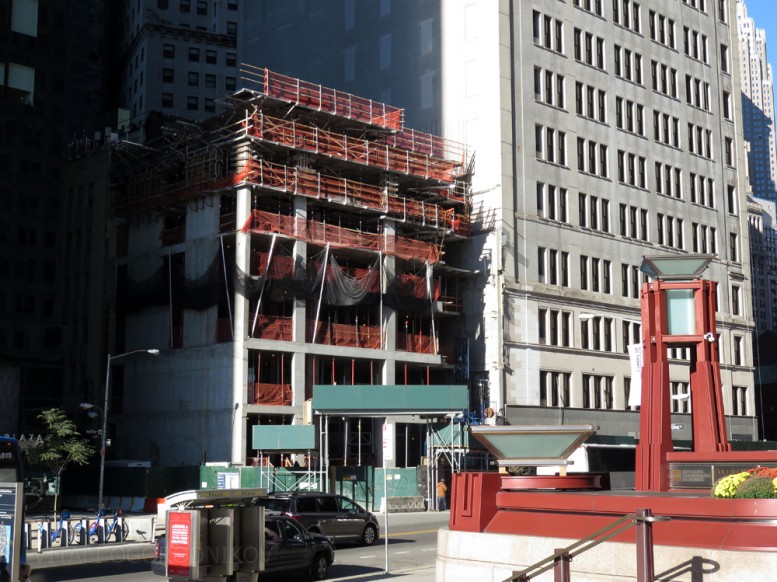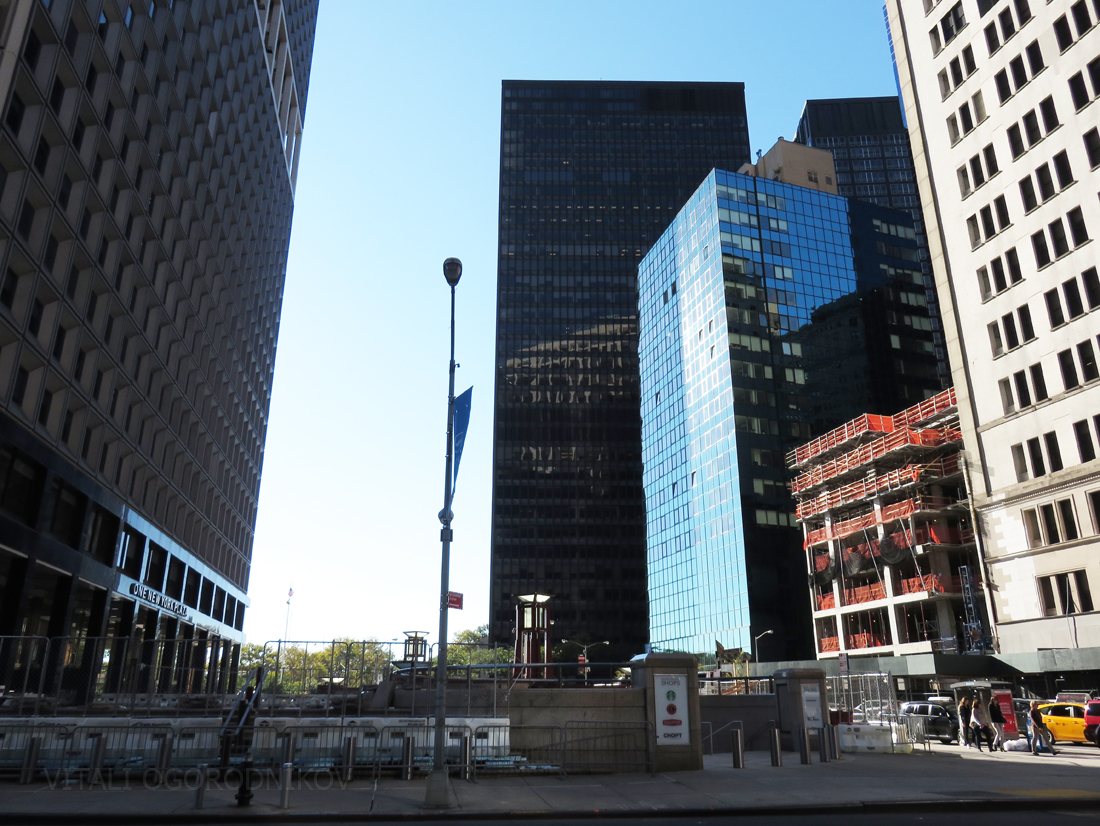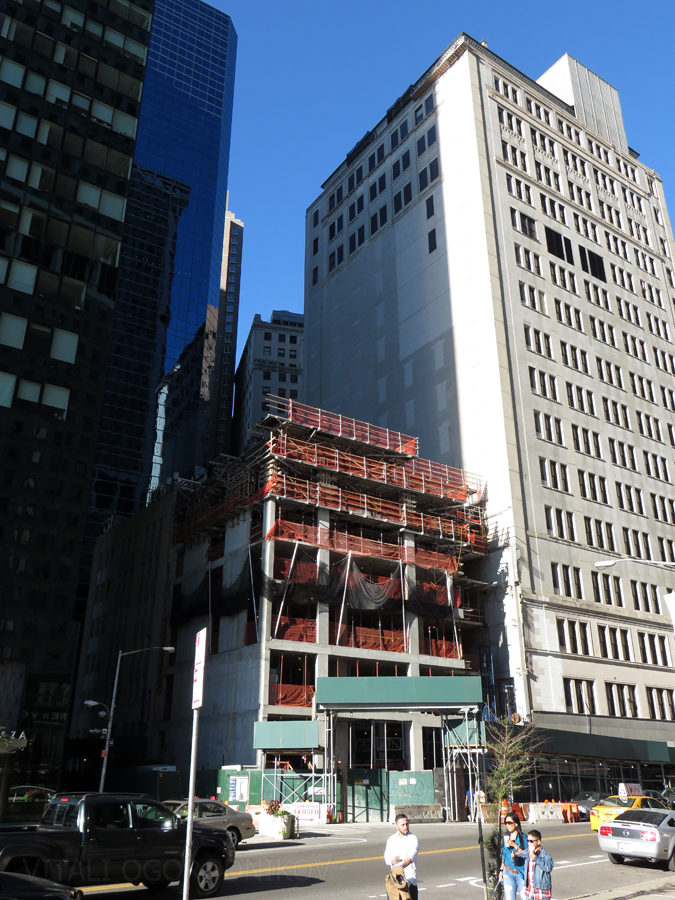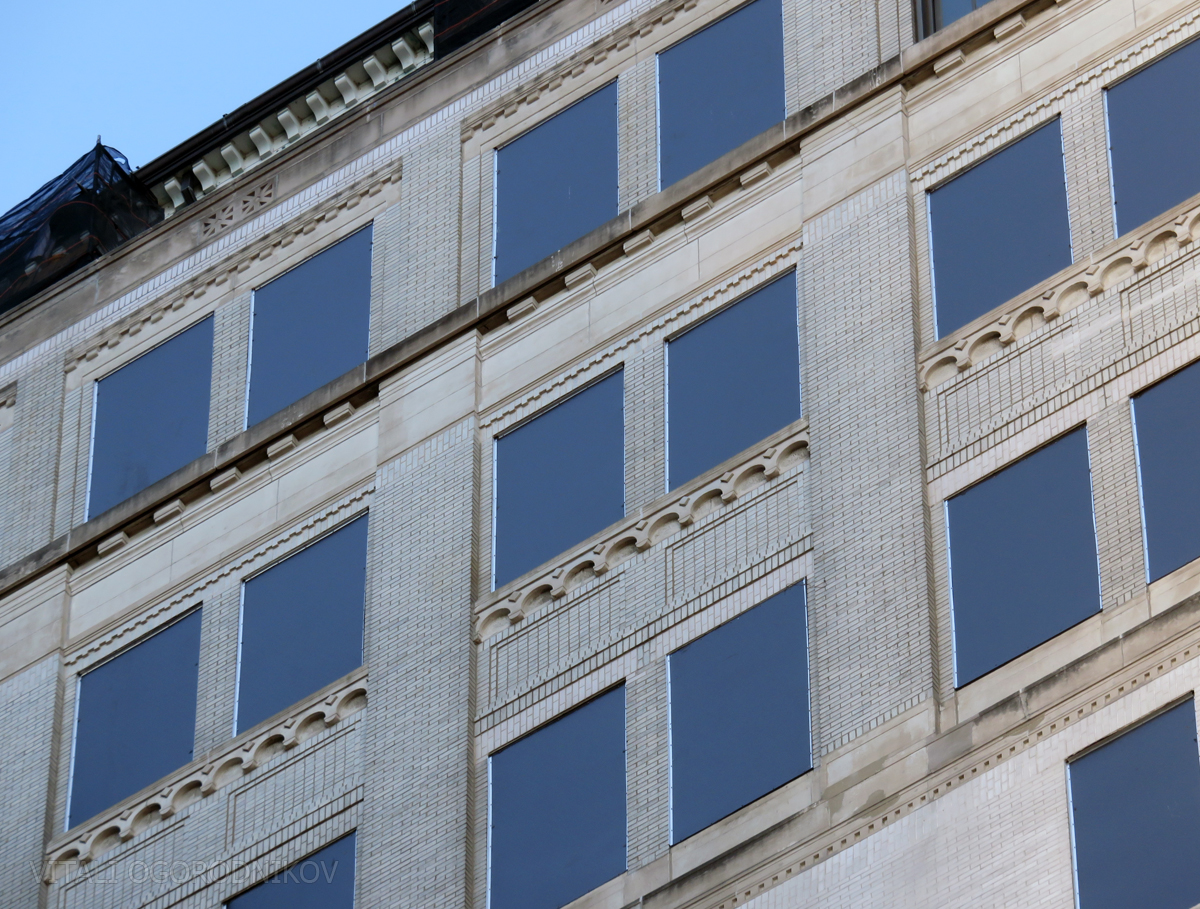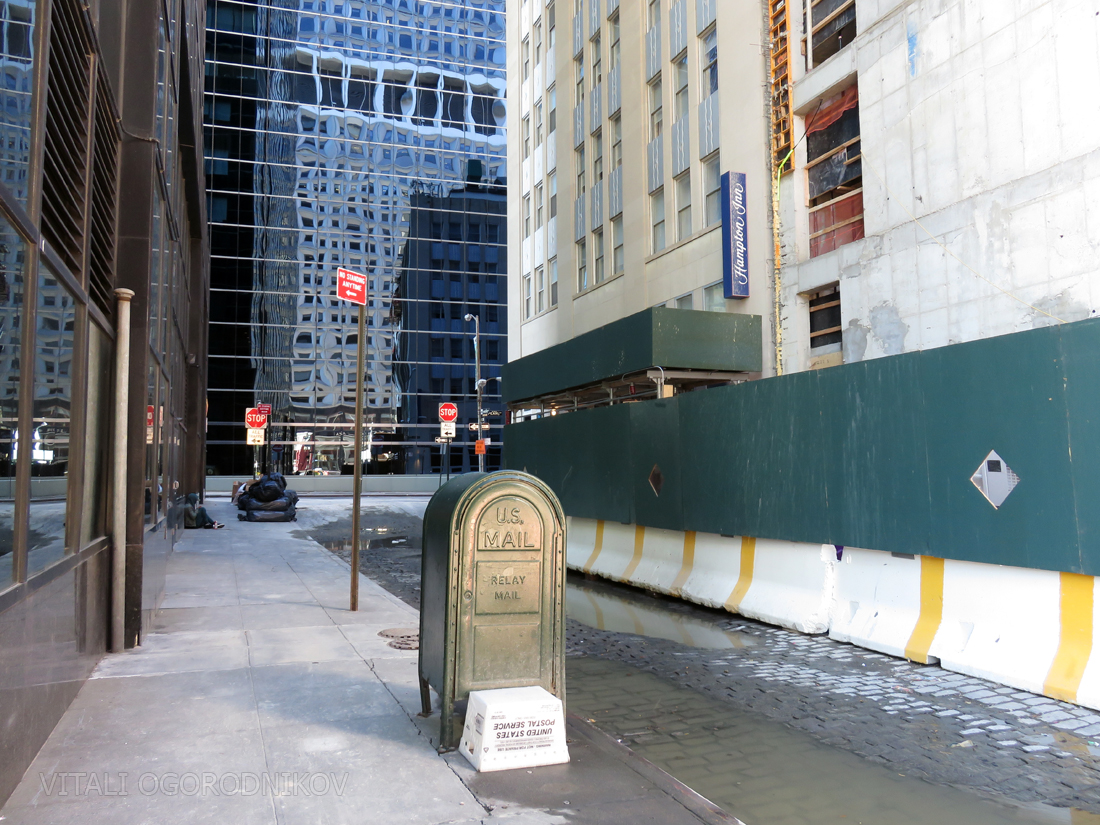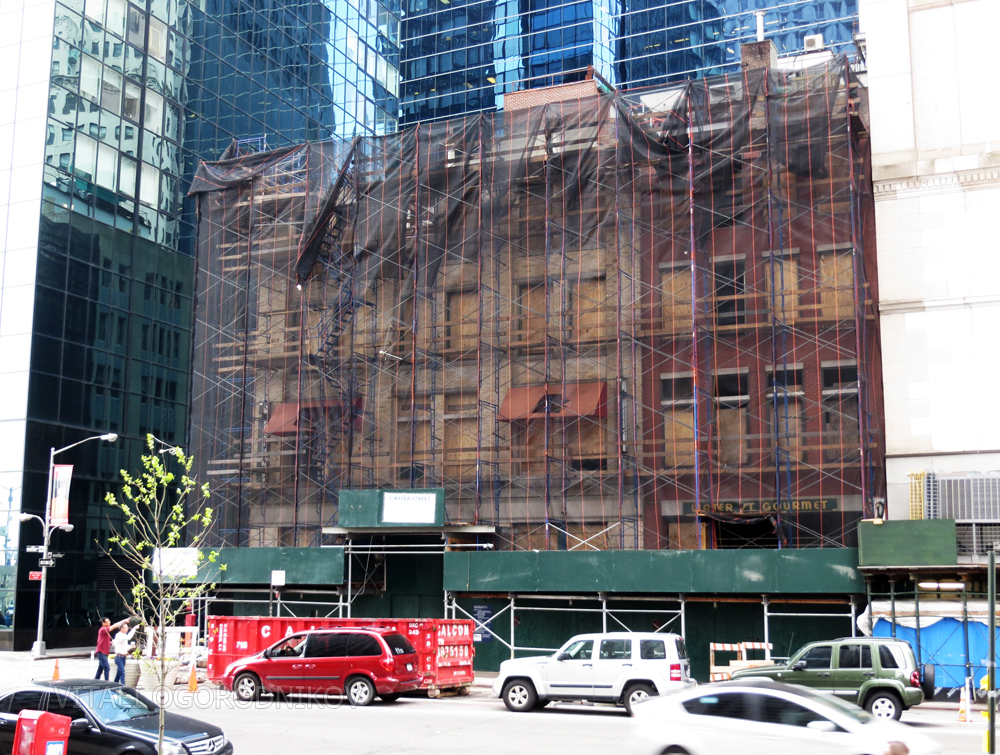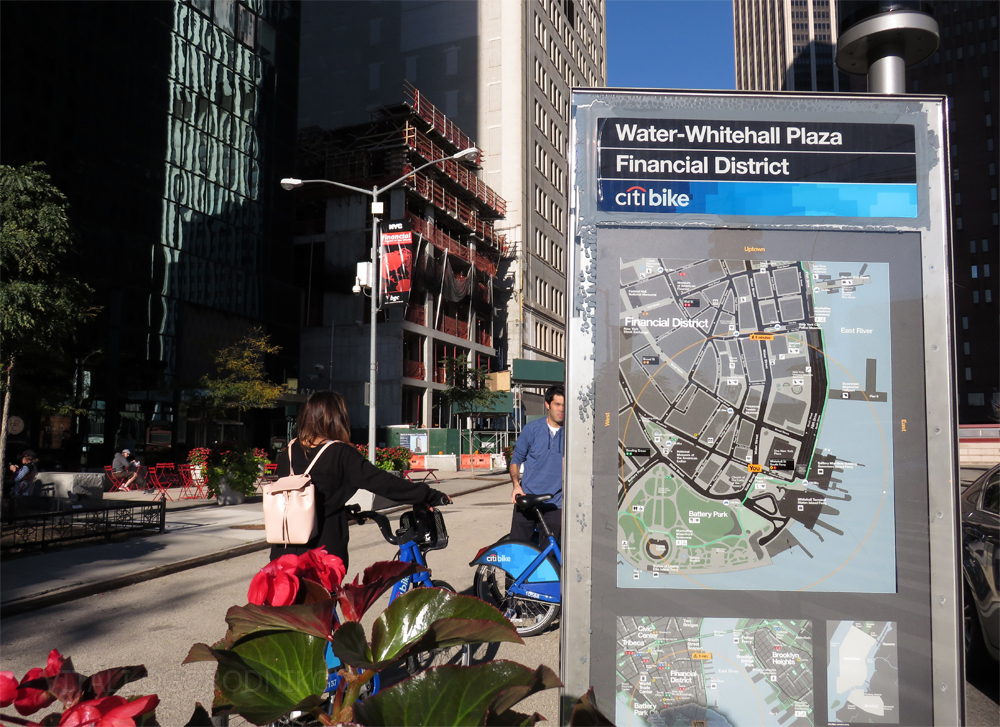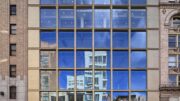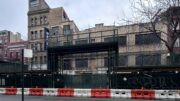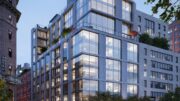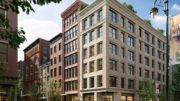The hotel at 6 Water Street in the Financial District, slated to stand 29 stories tall, has reached its eighth floor. The future 249 room establishment, designed by Gene Kaufman, is located near the southern tip of Manhattan, making it the southernmost construction project on the island. Only seven highrise buildings claim a latitude further south.
Upon completion, the building will stand over 300 feet in height, with an off-white striped body rising out of a dark colored base. The top three floors of the front façade are to be clad in glass. The side façade along Moore Street will consist of a largely blank wall, blocking the similarly blank wall of its eastern neighbor at 104 Broad Street, a 17 story office structure designed by McKenzie, Voorhees & Gmelin, and completed in 1920. The upper three stories of its lot wall are the only portions with windows and decoration. The windows have already been blocked in, and a portion of the trim will remain exposed north of where the new tower will rise.
The hotel’s blank side wall will make the short and narrow Moore Street even more inhospitable than it was before. The little used, cobblestone-paved street might make for a decent pedestrian conversion, but the idea may be hampered by a complete lack of retail and accessible building frontage along the street’s length.
Regardless, closing Moore Street to traffic would allow for a joining of the two Water Street plazas, one of which sits directly in front of the hotel. The city carved out the plazas from an underused traffic lane several years ago. Today, the pedestrian space features a Citibike station and light metal furniture of the type used along the similarly reclaimed Broadway Boulevard, and provides a more inviting setting than the large, elevated, empty public space at One New York Plaza across the street.
Though the city is yet to name this brand new public space, the Citibike station labels it as the Water-Whitehall Plaza.
In the rear, the tower will cantilever over the seven story Hampton Inn on Moore and Pearl Streets.
The hotel replaces 12 Water Street, a 21,000 square foot building with a McDonald’s on the lower two floor and offices above. Densification is a welcome sight on most underused lots in the city, yet the pre-war building was an effective urban component. Its brick façade topped by a cornice was attractive, and its scale provided a visual transition from pedestrian level to the larger towers all around. The building came down in the first half of 2013.
Though direct river views from hotel rooms will be mostly obstructed by neighbors such as the 2.6 million square foot One New York Plaza, a clear southwestern sightline will offer harbor views from Governors Island to the Statue of Liberty, which stands two miles away. The location will provide convenient lodging to both business travelers and tourists, with immediate access to the Financial District, the Statue of Liberty, Staten Island and Governors Island ferries, and the rest of Lower Manhattan’s offerings.
The plaza at 85 Broad Street, which exposes remains of Dutch New York via portals in the ground, is a block away, and so is the neighborhood’s chief dining and nightlife district around Stone Street.
Though the site was also well-suited for both office and commercial uses, hotels positively contribute to the Financial District’s continued transformation into a round-the-clock neighborhood.
While the project is bound by its Floor-Area Ratio limit, basic urban planning logic dictates that a site so well served by public transit should have been permitted to support a larger development.
Like any other building on the outside fringes of Lower Manhattan, the hotel may be vulnerable to storm damage if another large hurricane follows in the wet footsteps of Hurricane Sandy. However, its harbor-exposed location also ensures partial visibility on the skyline, a handy feature for a mid-sized tower that would otherwise be lost in the stone and glass thicket of Downtown’s skyscrapers.
Subscribe to YIMBY’s daily e-mail
Follow YIMBYgram for real-time photo updates
Like YIMBY on Facebook
Follow YIMBY’s Twitter for the latest in YIMBYnews

